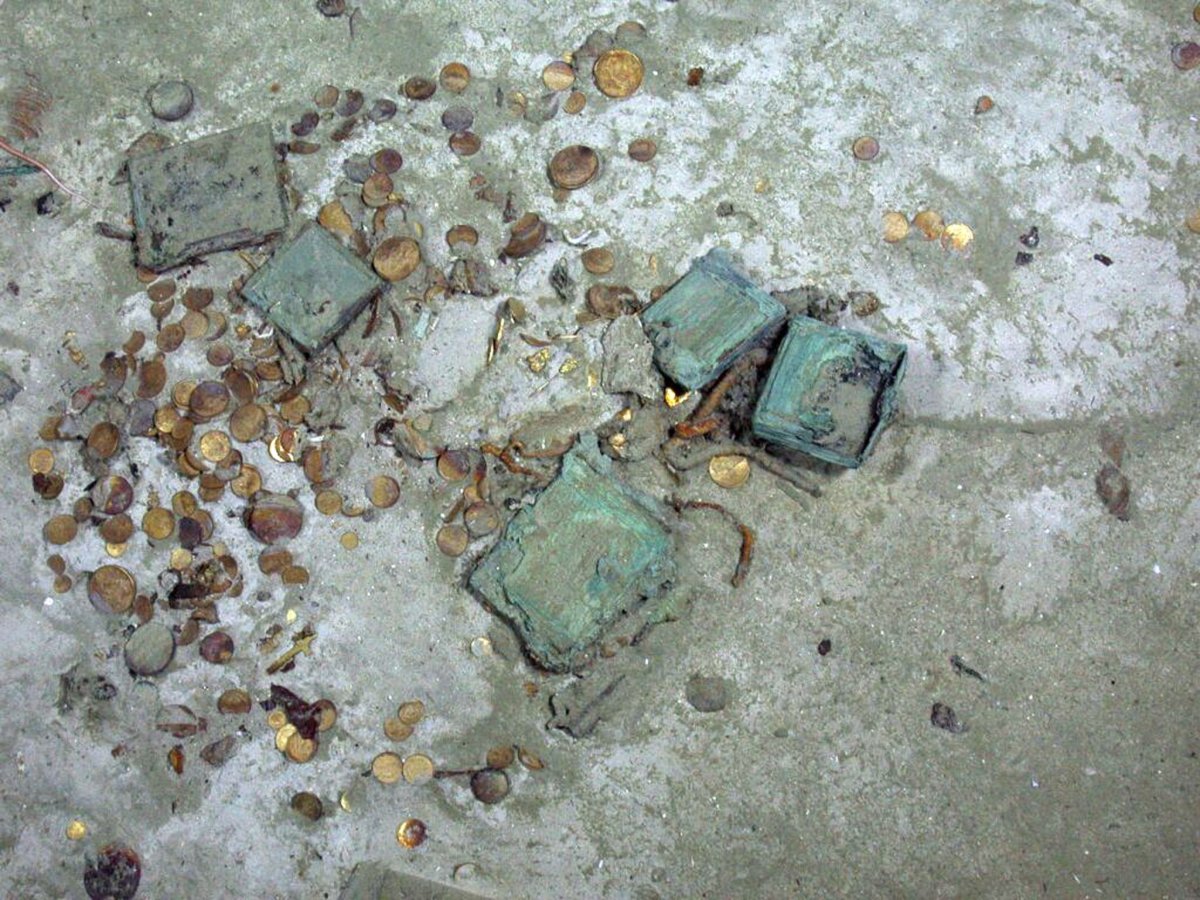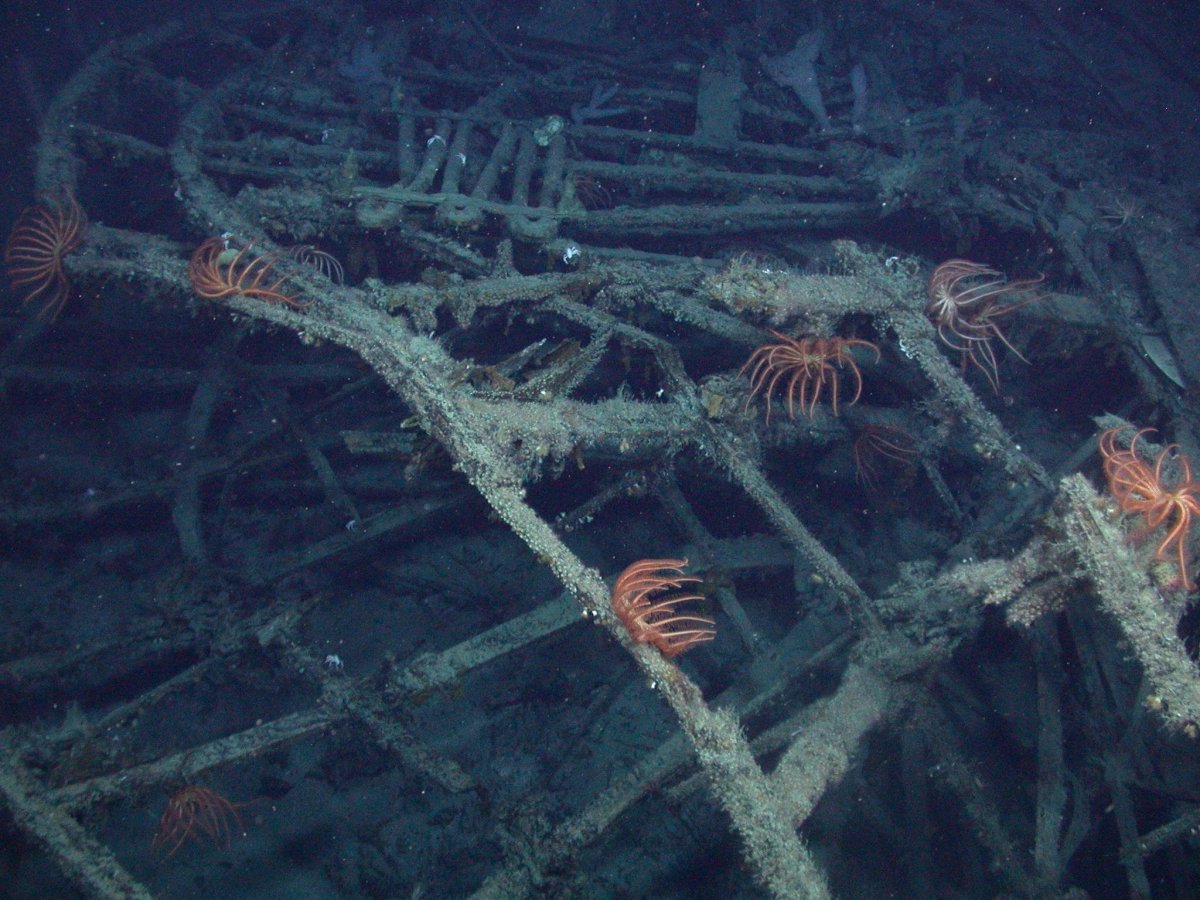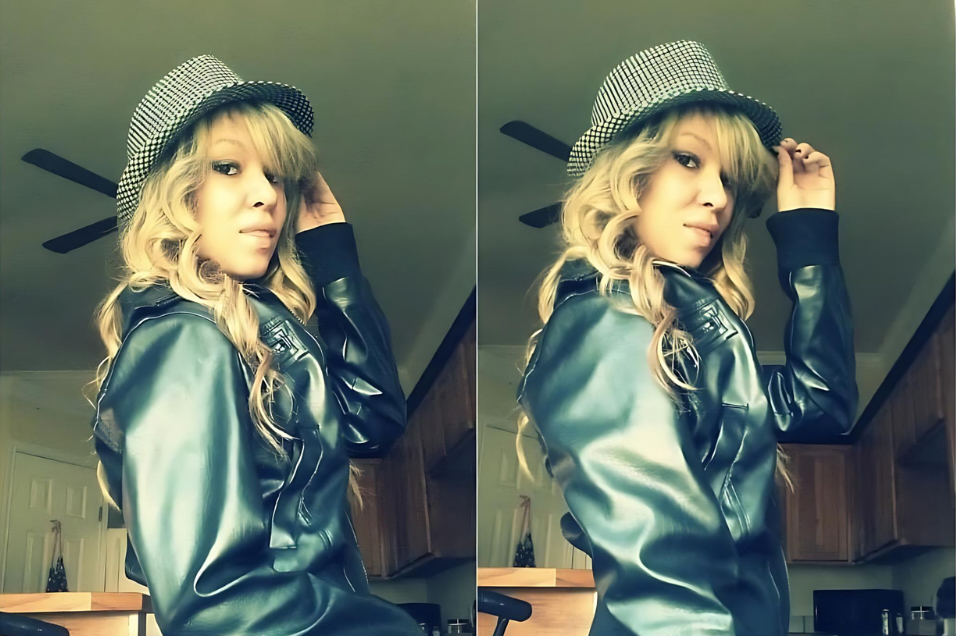
More than 2,900 gold coins and 45 gold ingots have been recovered from the shipwrecked S.S. Central Americasince an archaeological excavation began in mid-April, Odyssey Marine Exploration, the company contracted to dive to the site, revealed on a report published Tuesday.
Other 19th century artifacts recovered include luggage pieces, a pistol, a pocket watch, and several daguerreotypes, an early type of photography. Several samples of coral and sea anemones have also been collected through a science program which is studying deep sea biological diversity.

Pine and oak specimens placed on the seabed in 1990 and 1991, during the last known dives to the shipwreck site, are being retrieved so that scientists can study the "shipworms" consuming and destroying the ship's timbers.
"The insights provided by this experiment have provided valuable new information about the degradation of shipwrecks in this environment, and it greatly aids our interpretation of the conditions we are observing on this site and can expect of other shipwrecks in similar circumstances," says one of the reports previously released by Odyssey Marine Exploration.
The S.S. Central America sank off the Carolina coast in 1857, at the height of the California Gold Rush, when it sailed into a hurricane. It had departed, days earlier, from Panama, with roughly 580 passengers who were carrying with them an unknown amount of gold. Estimates for the total gold cargo range between three and 21 tons of gold.

The ship's sinking contributed to the Panic of 1857 and the subsequent economic depression in the United States, historians say.
Thomas G. Thompson, a research scientist from Defiance, Ohio, discovered the ship's location—approximately 160 miles off of South Carolina—in 1987, after years developing the necessary technology to map and explore the sea floor. During this time, wealthy Ohioans poured money into Thompson's search.
Nemo, a remotely operated vehicle, brought up more than $40 million in gold from the wooden-hulled, sidewheel steamship, considered by many the Titanic of its time. Scientists and engineers who participated in the initial recovery remember the overwhelming excitement of watching a live feed of the shipwreck as they struck gold.

Shortly after Nemo brought up the first batch of gold, a group of American and British companies that had insured the ship's cargo more than a century claimed rights to the treasure. In 1993, after a lengthy, contentious lawsuit, Thompson's company, Columbus-America Discovery Group and the insurers agreed to divide the treasure, with the former acquiring 92.5 percent of the recovered sunken goods.
Two years later, Thompson was slapped with a new lawsuit, this time by some of his investors, who said that they had not received the returns they were promised. In 2012, Thompson missed a related hearing and became a fugitive after a federal judge issued an arrest warrant for the treasure hunter.

In March, Odyssey Marine Exploration was awarded an exclusive contract to recover the remaining treasure from the shipwreck. The publicly traded, Tampa, Florida–based company is slated to receive 80 percent of recovery proceeds up to a fixed fee and 45 percent thereafter.
In June, Chief U.S. District Judge Rebecca Beach Smith ordered an expert to supervise the U.S. Marshals' handling of the artifacts pulled up from the wreck, according to Mike Lorz of the Columbus-America Discovery Group.
The deep-ocean shipwreck exploration company has published four reports since it took its first dive to the S.S. Central America four months ago, including lists of the number and type of coins found. Among the lists are historical items such as a pair of cotton pants, two sealed paper parcels, a white ceramic pipe bowl, a padlock and key.
Uncommon Knowledge
Newsweek is committed to challenging conventional wisdom and finding connections in the search for common ground.
Newsweek is committed to challenging conventional wisdom and finding connections in the search for common ground.
About the writer
Karla Zabludovsky covers Latin America for Newsweek. Previously, she reported for the New York Times from Mexico, covering regional politics, ... Read more
To read how Newsweek uses AI as a newsroom tool, Click here.








